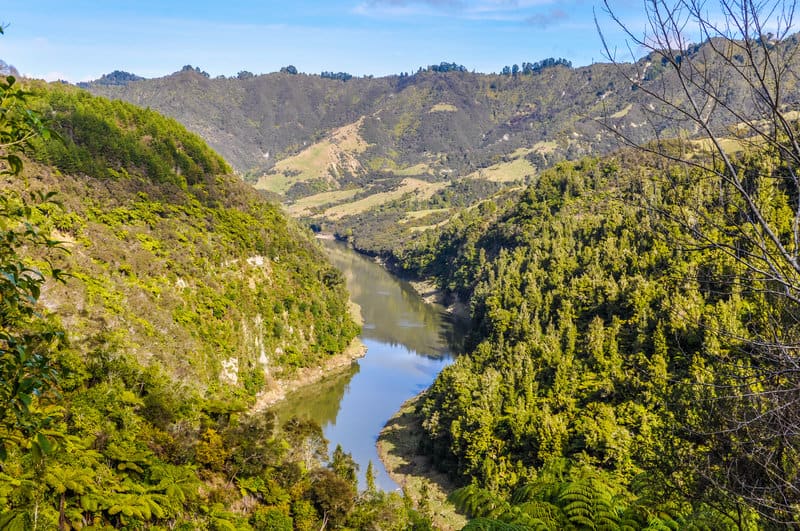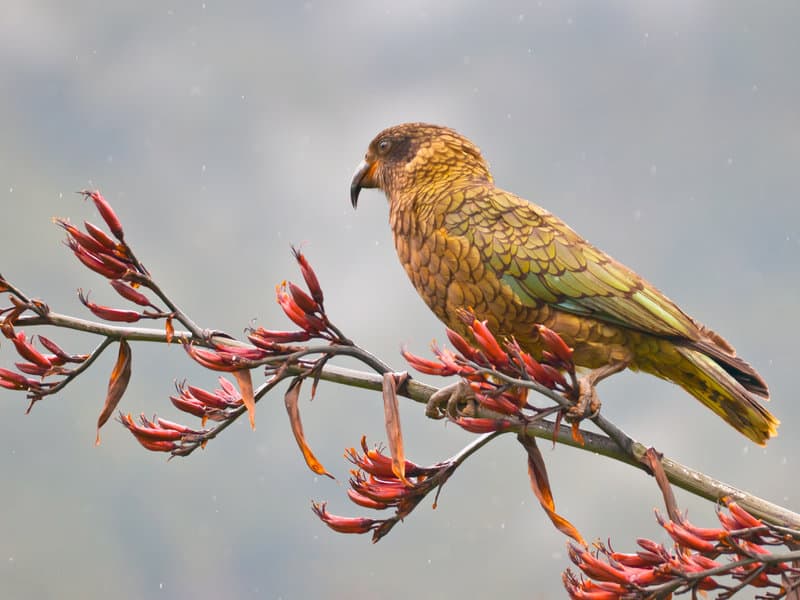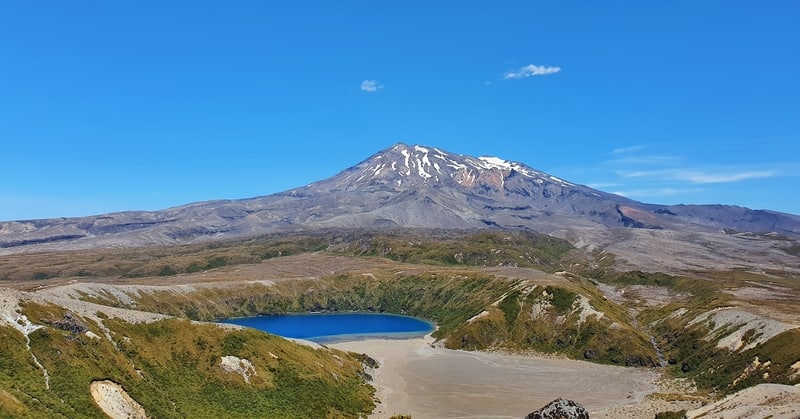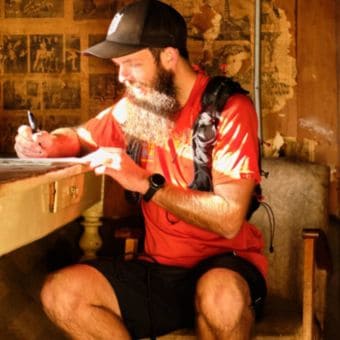Have you seen any photos of New Zealand’s national parks?
If not, look some up now.
You might think the only criterion of somewhere becoming a national park is how stunning the place is.
It’s true, they’re all epic, but there’s a whole lot more to a place becoming a national park.
Each country has its own variations of establishing national parks. But there are two common themes. National parks are formed as:
- a badge of national pride
- to ensure the conservation of the wild nature for eternity
What I wanted to do with this post was to give more context to the national parks in New Zealand. Here goes…
INTERESTING THINGS ABOUT THE NEW ZEALAND NATIONAL PARKS

A view of the river flowing through the Whanganui National Park.
1.
As of 2020 there are 13 National Parks in New Zealand. There were 14. Te Urewera National Park was established in 1954 but was disestablished in 2014.
This is a list of the NZ national parks (in no particular order):
- Whanganui National Park
- Egmont National Park
- Tongariro National Park
- Abel Tasman National Park
- Nelson Lakes National Park
- Arthur’s Pass National Park
- Rakiura National Park
- Fiordland National Park
- Mount Aspiring National Park
- Kahurangi National Park
- Paparoa National Park
- Aoraki/Mount Cook National Park
- Westland Tai Poutini National Park
Or check their locations on this map:
2.
New Zealand’s national parks are protected under The National Parks Act 1980 . As with any policy, the small print is a nightmare to go through. Unless you’re a real national park guru, don’t bother. Here a couple of useful things to know:
- All of the New Zealand national parks are managed by the Department of Conservation (DOC)
- The essence of The National Parks Act 1980 is to balance the preservation of the national parks, while also allowing the public to enjoy the parks
3.
The first National Park to be established in New Zealand was Tongariro National Park in 1887. That makes it the oldest national parks in the world. More than 80 countries now have national parks.
It’s also one of only 39 (as of April 2020) mixed UNESCO World Heritage Sites (mixed meaning it is both a natural and cultural site). There are 1121 UNESCO World Heritage Sites in total.
4.
A number of the national parks have featured movies. One of the weirdest ones? The Last Samurai.
As a filmed based in Japan, Mount Fuji in the movie was actually Mount Taranaki in Egmont National Park. I guess you could say Mount Taranaki was a stunt double?
The film crew was American, cast Japanese…yet the film set was New Zealand?
Does that seem weird to you too? source
5.
Initially all of the National Parks in New Zealand were given their title for the beautiful views and scenery they offered visitors, sepcifically in the mountains.
That’s fair enough, but that meant the first 10 National Parks were mountainous locations which doesn’t represent the range of ecosystems in NZ.
Since the ’80s the docus has been to add diversity the the national parks. Since this change in focus, the newest National Parks are:
- Whanganui National Park- included for the major river system running through it
- Paparoa National Park – included as it has a lowland forest and unique geological features
- Kahurangi National Park – included for the diverse landforms and geology
6.

The Kea is a parrot endemic to NZ and is the only alpine parrot in the world. If you spend time in Arthur’s Pass National Park, you’ll likely see one if you make a little effort. They’re currently endangered. You can learn more about the kea here.
The Whanganui River was a massive reason behind forming Whanganui National Park. Today the river splits the national park in two. But interestingly, the bed and waters of the river aren’t technically a part of the national park.
source
7.
Rakiura, or more commonly known as Stewart Island has ~2000 square kilometres of land. 85% of this makes up Rakiura National Park
source
8.
Sticking with Rakiura National Park, there are 245 kilometres of trails within the National park you can explore. The most famous route being the Rakiura Track which is one of the countries Great Walks. At 32km it is suggested that people take 3-days to do the loop, but for the super fit, you might want to complete the Rakiura Challenge, and annual race around the Rakiura Track.
RELATED POST: INTERESTING FACTS ABOUT NEW ZEALAND
9.

We could argue all day about what is the most popular national park in NZ. It all depends on which metrics you’re using to define popular. But if we’re using what people are estimated to be searching for on the internet, using the exact name of the national park you’d see Abel Tasman National Park and Tongariro National Park as the most popular (according to KeySearch in April 2020).
Again, this isn’t going to be accurate as people use a whole host of search terms when looking up national parks. For example, when someone is looking up walks in Mount Aspiring National Park they might type:
- Mount Aspiring Park
- Aspiring National Park
- Mt Aspiring National Park
As you can see the rabbit hole gets deep fast. Does the national park with the hashtag used the most on Instagram the most popular?
10.
Just because a national park has been established with a boundary, that doesn’t mean it’s fixed to be that size in the future. This comes about when the GovernmentGovernment’s Nature Heritage Fund acquires the private land for a specific purpose.
In 2014, there were 1250 hectares added to Mount Aspiring, Paparoa, and Westland Tai Poutini National Parks (source.
The Westland Tai Poutini National Park was expanded by 4,400 hectares in 2010 (source). It’s growing fast!
11.

A view of the lower Tama Lake and Mount Ruapehu in Tongariro National Park.
Hiking etiquette is important whether you’re in a national park or not. But one rule that’s broken too often in NZ National Parks is around dogs. Despite people claiming they didn’t realise (the trailhead signs are all clearly labeled) they choose to ignore the rules.
In short, no dogs are allowed in New Zealand national parks.
As of the 2nd of May, 1996 the following was added to The National Parks Act 1980:
“Part 5A: inserted, on 2 May 1996, by section 3 of the National Parks Amendment Act (No 2) 1996 (1996 No 15).
56ARestrictions in relation to dogs
Except as provided in this Act or in any bylaws made under this Act, no person, being an owner of a dog or a person in charge of a dog, shall allow that dog to be in a national park.”
Consider this a reminder 😉
#teamcat
12.
Another UNESCO World Heritage Site in New Zealand is Te Wāhipounamu (in Maori it means limestone). Located in the southwest of the South Island, this site is huge.
26,000km² huge. The boundaries extend for 450km from top to bottom and it varies in width from 40-90km.
Established in 1990, there are four national parks that are part of the site:
- Aoraki/Mount Cook National Park
- Fiordland National Park
- Mount Aspiring National Park
- Westland Tai Poutini National Park
Having read this post, I hope New Zealand’s National Parks will take on a bit more meaning to you. There’s no doubt the beauty is amazing, but they each have a history behind them.
Learn as you explore them, you’ll appreciate more.
Chur, Jub
RECOMMENDED READING
200+ Things to do in New Zealand
Whether that’s inside or outside of the National Parks, there’s plenty to do in NZ.
The Tama Lakes Track
I think I prefer this track over the Tongariro Crossing in the Tongariro National Park :p
The lowdown on supermarkets in NZ
Because you’ll probably want to buy some snacks (ideally the cheapest) before you explore the national parks.

Hey, it’s Jub here. I’m the guy behind Chur New Zealand, helping you have the best time hiking, trekking, walking…whatever you want to call it…in NZ. I’m based in Queenstown and am always out and about exploring trails, old & new. If you have any questions, reach out.
